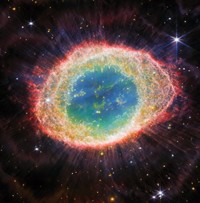Advertisement
Grab your lab coat. Let's get started
Welcome!
Welcome!
Create an account below to get 6 C&EN articles per month, receive newsletters and more - all free.
It seems this is your first time logging in online. Please enter the following information to continue.
As an ACS member you automatically get access to this site. All we need is few more details to create your reading experience.
Not you? Sign in with a different account.
Not you? Sign in with a different account.
ERROR 1
ERROR 1
ERROR 2
ERROR 2
ERROR 2
ERROR 2
ERROR 2
Password and Confirm password must match.
If you have an ACS member number, please enter it here so we can link this account to your membership. (optional)
ERROR 2
ACS values your privacy. By submitting your information, you are gaining access to C&EN and subscribing to our weekly newsletter. We use the information you provide to make your reading experience better, and we will never sell your data to third party members.
Physical Chemistry
Atom Versus Superatom
A photoelectron imaging spectroscopy study finds that periodic trends can predict molecules that behave like single atoms
by Elizabeth K. Wilson
January 11, 2010
| A version of this story appeared in
Volume 88, Issue 2

The concept of superatoms—molecules or collections of atoms that behave like a single atom—has received a boost from a new photoelectron imaging spectroscopy study (Proc. Natl. Acad. Sci. USA, DOI: 10.1073/pnas.0911240107). A. Welford Castleman Jr., Samuel J. Peppernick, and K. D. Dasitha Gunaratne of Pennsylvania State University compared the electron angular distributions and electron-binding energies of several diatomic molecules and their isoelectronic atomic counterparts—titanium monoxide versus nickel, zirconium monoxide versus palladium, and tungsten carbide versus platinum. They found the electronic properties are almost identical in each case, suggesting that an atom’s corresponding superatoms can be predicted by simply looking at the periodic table and finding combinations that collectively have the same number of outer-shell electrons as the single atom, Castleman says. Although the study confirms the electronic similarity of some transition-metal atoms and their corresponding superatoms, the researchers are now working to determine if the similarities extend to the rest of the periodic table and to atom-superatom chemical reactivities. A periodic table of superatoms could have many uses, the researchers say. For example, tungsten carbide has been shown to exhibit reactivity similar to the much more expensive workhorse catalyst platinum.




Join the conversation
Contact the reporter
Submit a Letter to the Editor for publication
Engage with us on Twitter